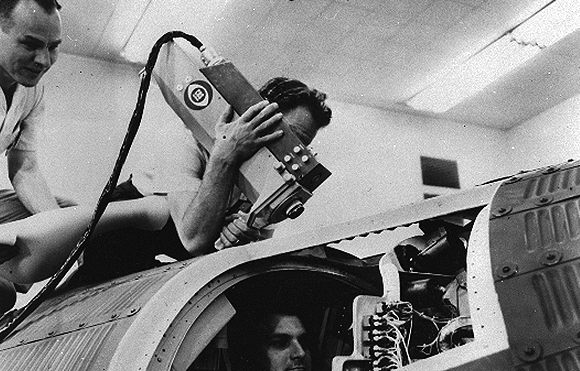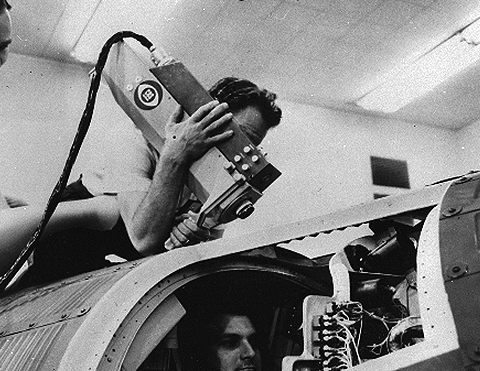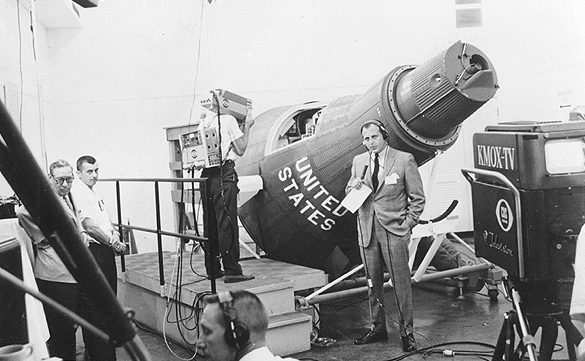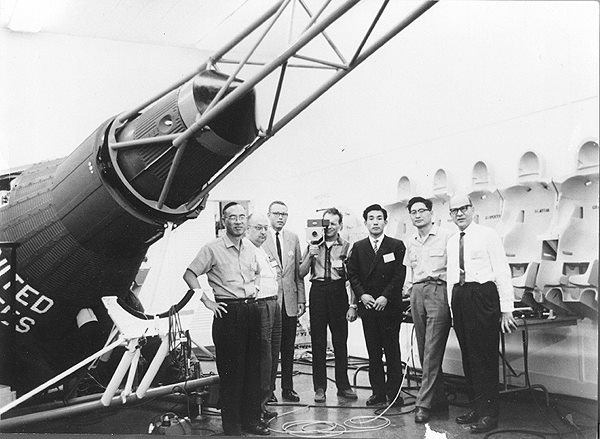

February 20, 1962…Glenn Orbits Earth, CBS Debuts Mini Camera
February 20, 1962…Glenn Orbits Earth, CBS Debuts Mini Camera
On this day in 1962, John Glenn became the first American to orbit the earth. His flight in Friendship 7 was NASA’s third manned space flight, but their first to take a man into earth orbit, as the first two had been suborbital.
Ten months earlier, Russian cosmonaut Yuri Gagarin had become the first man to orbit earth, and there was indeed a “space race” with the US lagging behind. Catching up and surpassing Russia was a matter of national pride.
In much the same way, there was a tech race between CBS and RCA. CBS was lagging RCA’s NBC in technology. but catching up and surpassing them was a matter of network pride. The color wars between the two a few years earlier had left blood on the walls and CBS hated to have to buy equipment from RCA. When the did, they took all the RCA markings off, which brings us to their mini camera development work with Ikegami.
RCA had introduced the “Walkie Lookie” hand held vidicon camera in 1952 and it got used at political conventions and once or twice was used on the sidelines of a football game in the mid ’50s. That I know of, CBS never bought any of these, but over time they discovered their need for a light portable camera.
In 1957, CBS used portable vidicon back pack cameras (like the RCA version) made by CSF Electronics in France. By 1960, the RCA TK60 and Marconi Mark IV cameras were coming on line with a bigger and sharper black and white picture from the new 4 1/2″ Image Orthicon tube. CBS wanted a portable that used and IO tube, and not a vidicon tube.
Dr. Joe Flaherty was a CBS VP of Technology around this time and was traveling to Japan and Europe looking for new ideas. At the BBC, he discovered they were testing what would eventually be the Norelco PC 60 color camera…a life changer for CBS.
In Japan, he became acquainted with a small electronics company called Ikegami that was working on a portable camera. One thing lead to another and by late 1961, they had built a prototype based on CBS specifications. In early ’62, Ikegami sent two engineers (seen below in the last image) and the CBS prototype cameras to the US for field testing.
That camera was used for coverage of Friendship 7, at the McDonald-Douglas plant in St. Louis where the capsule was built. There, they used the camera to shoot the interior of a Mercury capsule as the operator inside demonstrates what Glenn was doing as he orbited. The St. Louis pictures were folded into the hours of narration from Walter Cronkite and his colleagues as the flight progressed.
If you remember Walter’s “Go baby go” remark from the launch, here is his remembrance of that remark and the occasion. Enjoy and share. -Bobby Ellerbee


And today the phone that i am using to connect to the internet has a camera about the size of a pencil eraser and has unreal color and resolution can shoot still or video
Buck Rodgers here’s looking at ya
Network television was flexing its muscles at that point, so shaky video was common then. Don’t forget, the low sun angle in February, plus the fact that the Atlas launched eastward towards the direction of when the sun just rose, made it difficult for cameramen into staying with the rocket, but also not burning out its I/O tube.
I don’t think it was until Apollo launches that the pool feed had a color camera attached to the same tracking unit that NASA had with high speed film cameras and an operator whose sole duty was to track the Saturn-5. Somewhere there is a photo of a Norelco camera on the tracking mount.
Deep pity and respect to the guys who were assigned the “portable” cameras back in the day…
I just watched the pool feed “live” 55 years later. Crappy camera work, as I was also simutaneously watching the colour 16mm camera work on the Spacecraft Films DVD. If the 16mm film cameras can be steady with 300 or even 600mm lenses, why couldn’t broadcast TK-60s be on a proper pedestal to keep them steady? Every closeup shot of the Mercury capsule was “shaky cam” Similar shots on the film were nice and steady. Why the crappy TV camera work?
Get that guy a shoulder mount! We had the HL-33 back in the day, years before the HL-79. It may have been a “handy looky,” but it was also Heavy Looking (over 50 pounds for the head and backpack).
Ikegami of course eventually named this line of cameras the HL line as in HL-79. What does HL stand for you ask? Handy Lookie (not making this up.)